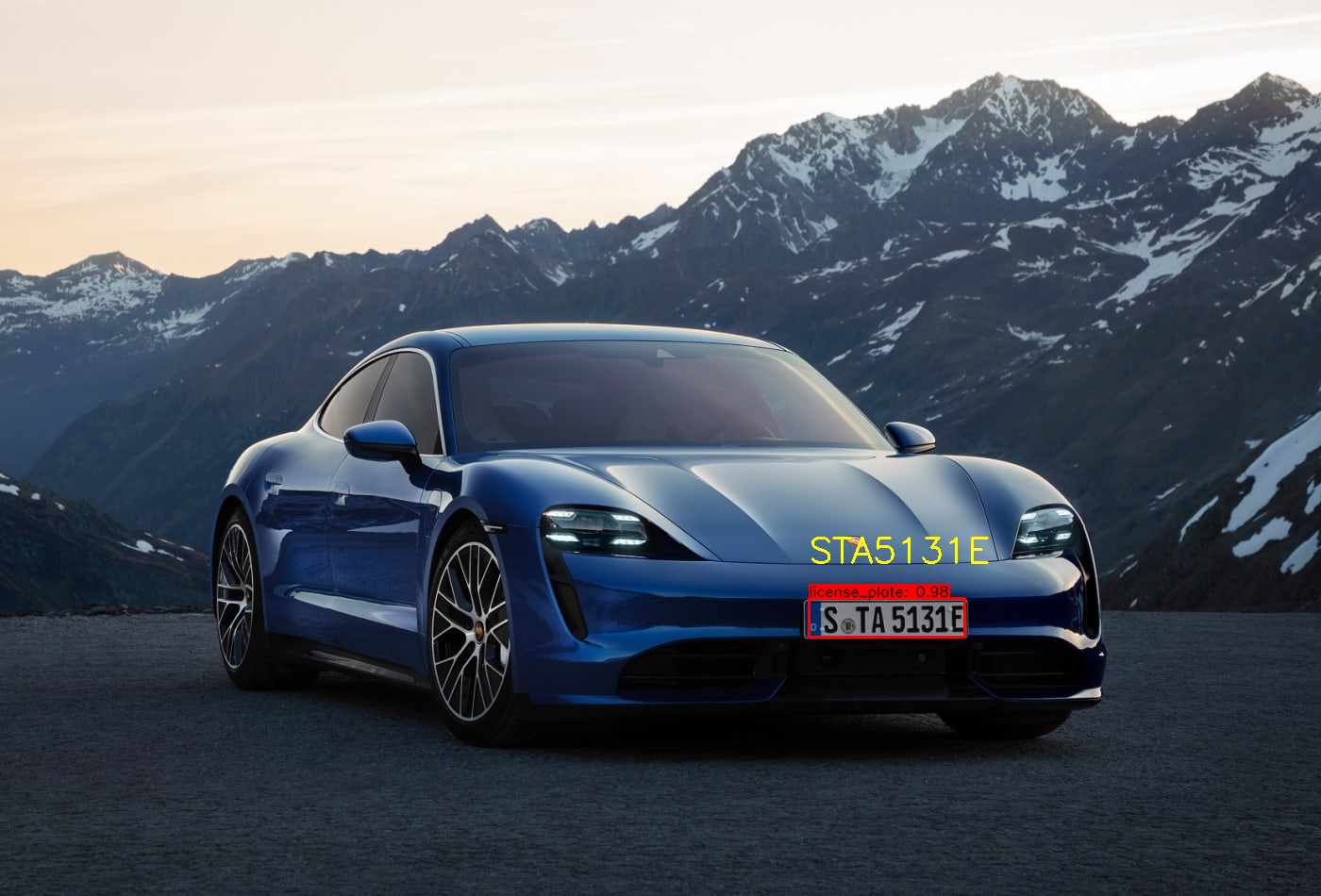Automatic Number Plate Recognition (ANPR) is a system capable of reading vehicle number plates without human intervention through the use of high speed image capture with supporting illumination, detection of characters within the images provided, verification of the character sequences as being those from a vehicle license plate, character recognition to convert image to text; so ending up with a set of metadata that identifies an image containing a vehicle license plate and the associated decoded text of that plate.
# Tensorflow CPU
conda env create -f conda-cpu.yml
conda activate yolov4-cpu
# Tensorflow GPU
conda env create -f conda-gpu.yml
conda activate yolov4-gpu# TensorFlow CPU
pip install -r requirements.txt
# TensorFlow GPU
pip install -r requirements-gpu.txtUSE MY LICENSE PLATE TRAINED CUSTOM WEIGHTS: https://drive.google.com/file/d/1EUPtbtdF0bjRtNjGv436vDY28EN5DXDH/view?usp=sharing
Copy and paste your custom .weights file into the 'data' folder and copy and paste your custom .names into the 'data/classes/' folder.
The only change within the code you need to make in order for your custom model to work is on line 14 of 'core/config.py' file. Update the code to point at your custom .names file as seen below. (my custom .names file is called custom.names but yours might be named differently)
The following commands will allow you to run your custom yolov4 model. (video and webcam commands work as well)
# custom yolov4
python save_model.py --weights ./data/custom.weights --output ./checkpoints/custom-416 --input_size 416 --model yolov4
# Run custom yolov4 tensorflow model
python detect.py --weights ./checkpoints/custom-416 --size 416 --model yolov4 --images ./data/images/car.jpg --plate
# Run yolov4 on video
python detect_video.py --weights ./checkpoints/custom-416 --size 416 --model yolov4 --video ./data/video/licence_plate.mp4 --output ./detections/results.avi --plate
# Run yolov4 on webcam
python detect_video.py --weights ./checkpoints/custom-416 --size 416 --model yolov4 --video 0 --output ./detections/results.avi --plate
This section will highlight the steps I took in order to implement the License Plate Recognition with YOLOv4 and potential areas to be worked on further.
This demo will be showing the step-by-step workflow on the following original image.
Taking the bounding box coordinates from YOLOv4 and simply taking the subimage region within the bounds of the box. Since this image is super small the majority of the time we use cv2.resize() to blow the image up 3x its original size.
Convert the image to grayscale and apply a small Gaussian blur to smooth it out.
The image is thresholded to white text with black background and has Otsu's method also applied. This white text on black background helps to find contours of image.
The image is then dilated using opencv in order to make contours more visible and be picked up in future step.
Next we use opencv to find all the rectangular shaped contours on the image and sort them left to right.
As you can see this causes many contours to be found other than just the contours of each character within the license plate number. In order to filter out the unwanted regions we apply a couple parameters to be met in order to accept a contour. These parameters are just height and width ratios (i.e. the height of region must be at least 1/6th of the total height of the image). A couple other parameters on area of region etc are also placed. Check out code to see exact details. This filtering leaves us with.
The individual characters of the license plate number are now the only regions of interest left. We segment each subimage and apply a bitwise_not mask to flip the image to black text on white background which Tesseract is more accurate with. The final step is applying a small median blur on the image and then it is passed to Tesseract to get the letter or number from it. Example of how letters look like when going to tesseract.
Each letter or number is then just appended together into a string and at the end you get the full license plate that is recognized! BOOM!
Running the license plate recognition straight on video at the same time that YOLOv4 object detections causes a few issues. Tesseract OCR is fairly expensive in terms of time complexity and slows down the processing of the video to a snail's pace. It can still be accomplished by adding the --plate command line flag to any detect_video.py commands.
However, I believe the best route to go is to run video detections without the plate flag and instead run them with --crop flag which crops the objects found on screen and saves them as new images. See how it works here Once the video is done processing at a higher FPS all the license plate images will be cropped and saved within detections/crop folder. I have added an easy script within the repository called license_plate_recognizer.py that you can run in order to recognize license plates. Plus this allows you to easily customize the script to further enhance any recognitions. I will be working on linking this functionality automatically in future commits to the repository.
Running License Plate Recognition with detect_video.py is done with the following command.
python detect_video.py --weights ./checkpoints/custom-416 --size 416 --model yolov4 --video ./data/video/license_plate.mp4 --output ./detections/recognition.avi --plate
The recommended route I think is more efficient is using this command. Customize the rate at which detections are cropped within the code itself.
python detect_video.py --weights ./checkpoints/custom-416 --size 416 --model yolov4 --video ./data/video/license_plate.mp4 --output ./detections/recognition.avi --crop
Now play around with license_plate_recognizer.py and have some fun!
Can also implement YOLOv4 using TensorFlow Lite. TensorFlow Lite is a much smaller model and perfect for mobile or edge devices (raspberry pi, etc).
# Save tf model for tflite converting
python save_model.py --weights ./data/custom.weights --output ./checkpoints/yolov4-416 --input_size 416 --model yolov4 --framework tflite
# yolov4
python convert_tflite.py --weights ./checkpoints/custom-416 --output ./checkpoints/custom-416.tflite
# Run tflite model
python detect.py --weights ./checkpoints/custom-416.tflite --size 416 --model yolov4 --images ./data/images/car.jpg --framework tfliteCan also implement YOLOv4 using TensorFlow's TensorRT. TensorRT is a high-performance inference optimizer and runtime that can be used to perform inference in lower precision (FP16 and INT8) on GPUs. TensorRT can allow up to 8x higher performance than regular TensorFlow.
python save_model.py --weights ./data/custom.weights --output ./checkpoints/custom.tf --input_size 416 --model yolov4
python convert_trt.py --weights ./checkpoints/custom.tf --quantize_mode float16 --output ./checkpoints/custom-trt-fp16-416
python detect.py --weights ./checkpoints/custom-trt-fp16-416 --model yolov4 --images ./data/images/car.jpg --framework trt








